#i literally have spent the last 9 months in okayama prefecture and osaka. osaka for a TOTAL of like 40 hours around flights.
Explore tagged Tumblr posts
Text
okay so i put the cash i have left in japan in front of me and stared at it and i think i will be okay so long as sending my suitcases does not cost MORE than ¥12,000. i have to put ¥10,000 back in my bank account for fucking docomo, i need another ¥10,000 to pay for trains to the goddamn airport because transportation in japan is not anywhere near as cheap as the internet would lead you to believe, then the ¥12,000 for having the suitcases taken to my airbnb and i'll have ¥5,000 left to. eat at all until i leave the country. and when i check my second bag i will simply have to use my american debit card bc thats All i have here 👍
#again. i hate altia. i cannot believe that 9 months of work netted me 0 dollars and 0 cents in savings and i didnt even GO anywhere.#i literally have spent the last 9 months in okayama prefecture and osaka. osaka for a TOTAL of like 40 hours around flights.#yeah i went to korea twice but MY BOYFRIEND paid for those flights. you know what i paid for? japanese trains to the aiport.#which cost as much as the flights.#i hate altia. shit ass wage for real. i dont even know how the little fresh out of collegers do it.#like i have no money. i dont spend on stuff. i didnt buy my niche fashion or whatever. i LEFT my expensive niche fashion. i solf#*sold items from my expensive niche fashion. i have barely survived.#i dont know how Anyone does it i genuinely think i must be stupid i must be ass with money or something#my '''¥240 000''' paycheck was at ¥140 000 or less by the time it hit my bank account after altia was done skimming it for themselves#and then paying for gas in THEIR car to go to my job i do FOR THEM and CRAZY EXPENSIVE utilities in the apartment THEY PUT ME IN#would always have me down to like ¥80 000 in a good month to like eat and enjoy myself with?#but i also did have to send money home because japanese bank accounts are miserable and you cant use them for anything#so i'm eating off of ¥1 000 per day for breakfast and my homemade bento lunches AND dinner#and then when i was lucky i would go to okayama city and have one nice meal with my friends on the weekend#but going to the city costs fucking ¥2 000 so is it worth it?#i dont think this is a good job and genuinely i dont even think the fresh graduates should be doing it#if you want to delay your future this is the job for you. altia misleads you on their website and gives you half-truths in interviews.#dont work there.#t
4 notes
·
View notes
Text
Golden Week Adventures
Remember how I said spring break was going to be my last trip for a while?
Well, I lied. Because even though I had no money, I found myself physically incapable of sitting at home for 5 days in a row with nowhere to go while everyone else was traveling. Such is life in Japan.
And so, only a month after my spring break trip, for the first time since coming to Japan, I decided to really get out and enjoy all of the chaos that traveling during Golden Week entails. Together, a friend and I set out to explore southern Honshu (confusingly called “Chugoku”--a word which also means “China”) and tick a few more prefectures off each of our lists.
On Friday night, I met my friend at her place and we walked the quick journey to the Matsumoto bus terminal, where we caught the dreaded night bus to Osaka. We left around 10:30, and, after 7 and a half completely sleepless hours, we arrived at Osaka Station. We stopped at a bakery for breakfast and caffeine before we quickly hopped on a train headed to our first stop, Himeji City in Hyogo Prefecture, only about an hour from Osaka by local train. From Himeji Station, it only took about 20 minutes on foot to reach the main attraction of the city--Himeji Castle.

Himeji Castle (also called the White Heron Castle) is the most famous and most visited castle in Japan. It’s also the largest, one of the oldest, and (along with only 11 other castles) has never been destroyed in any way. It has survived extensive bombing during World War II and the great Hanshin earthquake (Kobe earthquake). It’s both a national treasure of Japan and a UNESCO World Heritage Site. And it has ties to both Toyotomi Hideyoshi and Tokugawa Ieyasu. Two years ago, a 7-year-long renovation on Himeji Castle was completed, and since then, more than 2 million people a year have visited the castle.
In short, this is one castle that you can’t miss according to anyone who has been to see it ever.
With all that hype, I’ve got to say I was a little skeptical. I mean, it’s just another castle, right? Japanese people always get so excited over little castle things--oh, it’s over 400 years old! Cool! Or it’s the largest castle in Japan! Cool! In all honesty, every castle I’ve been to in Japan has something that makes it “super special, omg, you can’t miss it.” But usually, the little details that are oh so important are never really that fascinating.
So you should believe me when I say that Himeji Castle was 100% worth the visit. The grounds and the castle are beautiful and large, and the architecture is stunning. The white exterior stands out when compared to most other castles, and is reminiscent of Osaka Castle without the modern museum inside. It’s definitely the best castle I’ve been to in Japan.
We arrived around 9 a.m., just as the doors opened. We bought our tickets and were lucky enough to get inside before the mass crowds that generally accompany Golden Week could come. We explored the inside of the castle for a while, marveling at the many weapons racks--this was clearly a castle built for war, although it never saw a single battle in its 400 years. As we left the main keep, we stopped to have our photo taken with a woman dressed like Princess Sen, the castle’s most famous inhabitant. Finally, we explored the large hallway and living quarters on the outskirts of the castle grounds before stopping at the gift shop and leaving the castle itself. It was only about 10:30, but the castle had already reached maximum capacity and people were lined up outside waiting for their chance to enter.
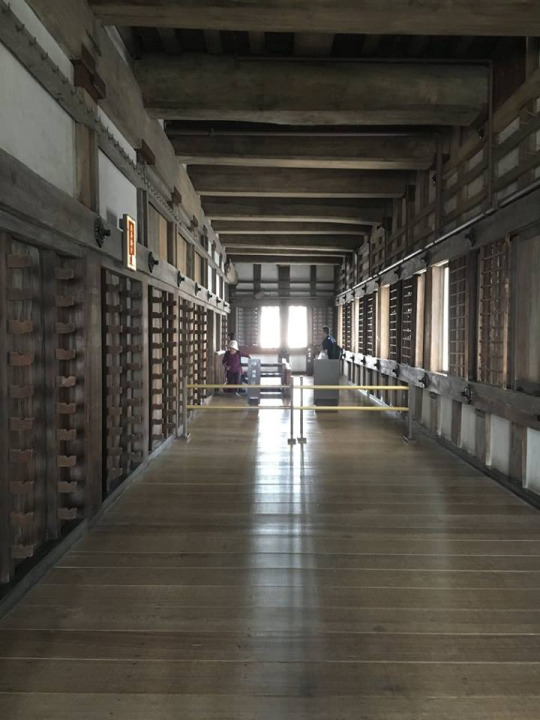


After we left the castle grounds, we had planned to visit the nearby gardens, but we got distracted by a boat ride, which was taking people on a short cruise around the castle’s moat.
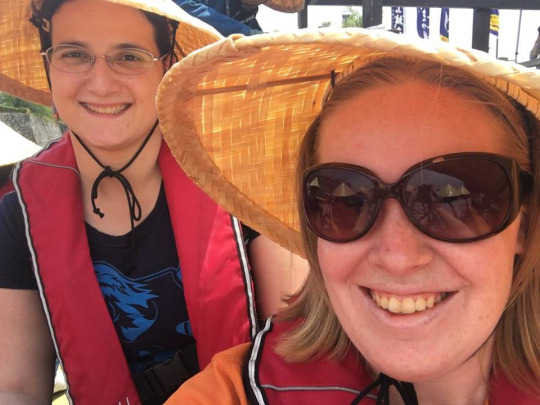
We enjoyed what little of the history talk we could understand, and were amazed as, during out 30-minute tour, the clear skies turned pitch black.
We decided to visit the garden despite the change in weather, and managed to enjoy a short walk before the skies let loose. With nothing else to do, we retreated to the classy Japanese restaurant on the grounds, where we both enjoyed grilled eel and tempura while waiting for the weather to clear up.
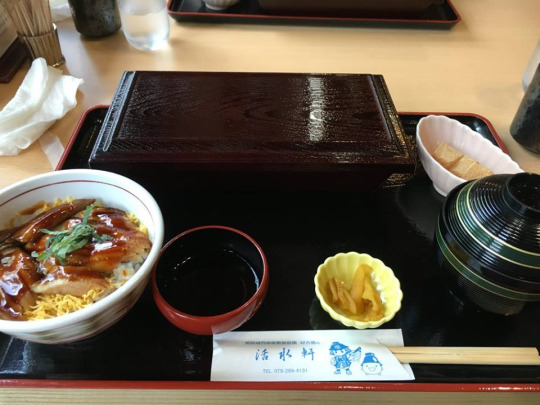
Luckily it did just as we finished lunch, and we spent a couple more hours exploring the nearly-empty garden before we finished the area.


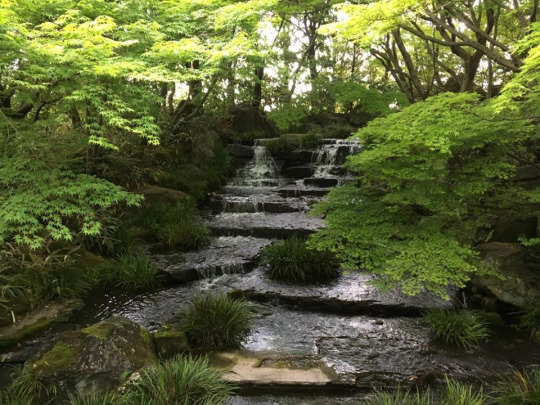
We stopped at a few souvenir shops, bought some festival food (yay Golden Week!) and headed back to the station to catch a train to our next destination: Okayama.
Now, in our massively crazy Seven-Prefectures-in-Nine-Days Master Plan, we had decided to only spend half the day at Himeji and the other half exploring Okayama Prefecture. But Himeji Castle was just so amazing, we couldn’t help but spend much longer there. By the time we were leaving, we knew we wouldn’t have any time to visit Okayama City that day, and so we simply caught the train straight to our hostel, which was about 20 minutes outside Okayama City, about an hour and a half from Himeji.


Our hostel may have been in the middle of nowhere, but it was a lovely building. We unpacked our things and went in search of food with another girl staying in our room. Eventually we decided on sushi at a lovely (and cheap) little sushi shop that served us literal mugs of green tea.

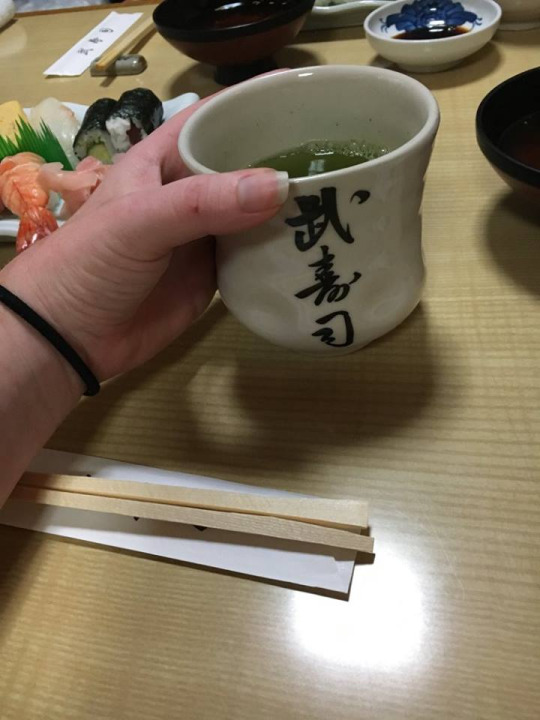
Being in the countryside, things closed pretty early of course, and so we retreated back to the hostel around 8:30 for showers and a couple episodes of Bones before bed.
________
The next morning, we woke around 8, packed up our things, and headed for the station where we caught the local train into Okayama City.
Okayama is also a castle city (there are a lot of those on this trip), but it’s much more famous for a completely unrelated thing--a fairy tale called Momotaro.

Momotaro is probably the most famous Japanese fairy tale--quite literally everyone knows the story. An old woman was washing clothes by the river one day when she saw a large peach float down in the water. Curious, she fished it out, split it open, and inside, she found a baby boy. She and her husband creatively named him “Momotaro” (Japanese for “Peach Boy”) and raised him to be strong and brave. One day, Momotaro heard a story about how some ogres from Onigashima (Ogre Island) were terrorizing innocent people, and he decided that he would go and stop the ogres. The old woman made him a sack full of a traditional Japanese snack called kibidango (dumplings made from pounded rice and covered in roasted soy bean powder) and sent him on his journey. Along the way, Momotaro met a dog, a monkey, and a bird. He shares his kibidango with each of them and they decide to accompany him to Onigashima. When they arrive, they fight and defeat the demons and everyone lived happily ever after the end.
Amusingly enough, this story is retold in the Hi Friends textbooks, which are used to teach English in elementary schools all over the country. The horrendous version in its entirety has become a massive inside joke among ALTs in Japan, and many ALTs frequently quote it.

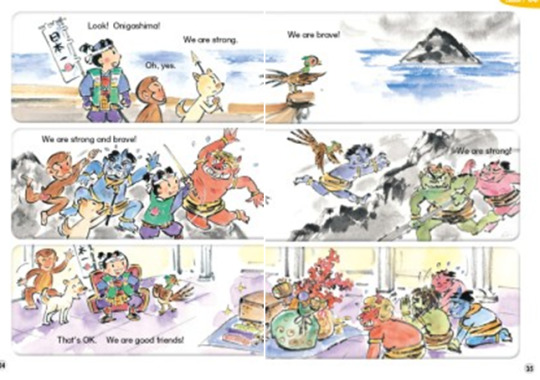
(Obviously some of the dialogue is missing because you’re supposed to listen to the audio with it...which, if you can believe it, is even better than the pictures). So if you’re ever in Japan and happen to hear a foreigner say “We are strong. We are brave. We are good friends.” and then proceed to fall over laughing, this is why.
Both my friend and I teach using this textbook. And so, although we enjoyed Okayama Castle, the vast majority of our time in this prefecture was spend spoofing Momotaro.
As you exit Okayama Station, your eyes are immediately drawn to this statue of Momotaro and his friends.
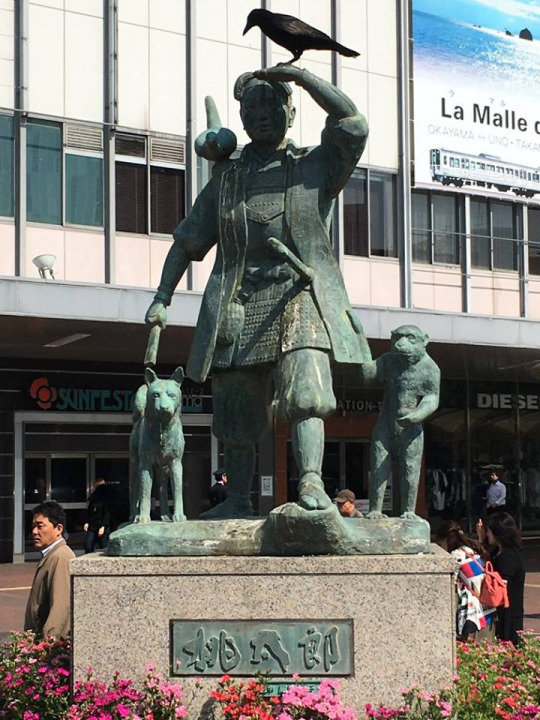
We made some silly poses with it and went on our way. On our trek to the castle, we also found a Momotaro manhole cover and quite a few souvenir stalls selling kibidango and other Momotaro products.
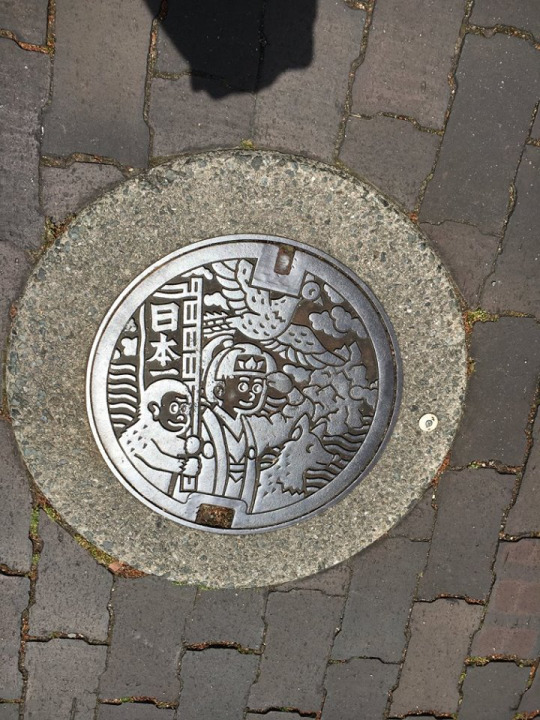
We did manage to make it to the castle, which was right next to an island park. The park was instantly named Onigashima by us, and many jokes were made about “Let’s go to...Onigashima!” The castle itself was interesting but uneventful, although it was covered in oddly-colored tape, which apparently is supposed to represent the 3 famous products of Okayama--jeans, peaches, and muscat grapes. Whatever, we thought it looked a bit strange.
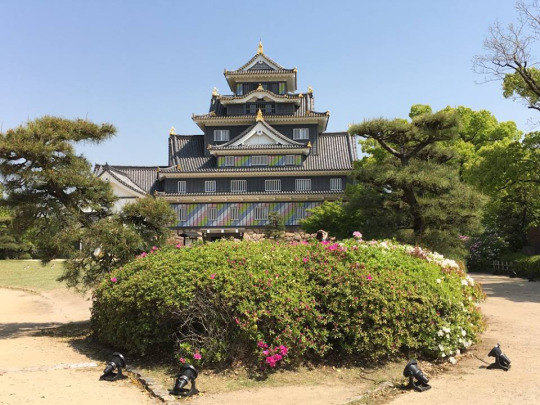
We explored the inside of the castle for a little while, bought some cheap kibidango from the souvenir shop, and retreated to the front lawn where we proceeded to take selfies while eating kibidango at Okayama Castle.
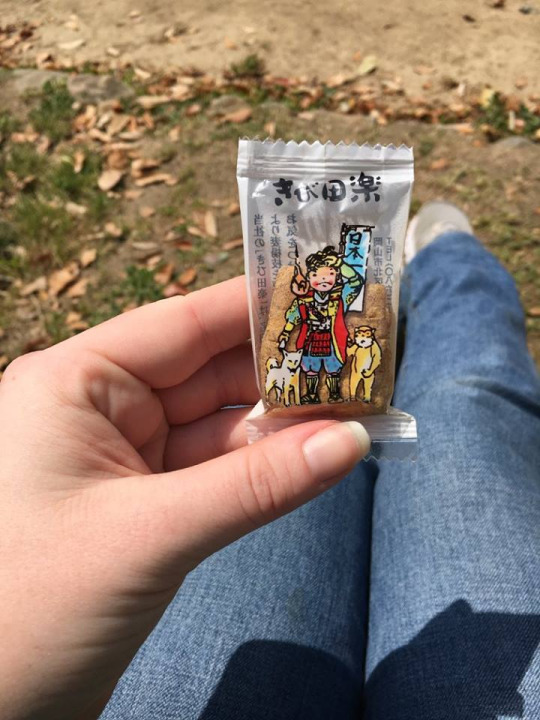

After the castle, we walked across a bridge to Korakuen Gardens Onigashima. Once there, we rented a swan boat for 20 minutes to enjoy the view of the castle from the river. Because nothing says “Japanese Culture” like swan boats in masking tape...?
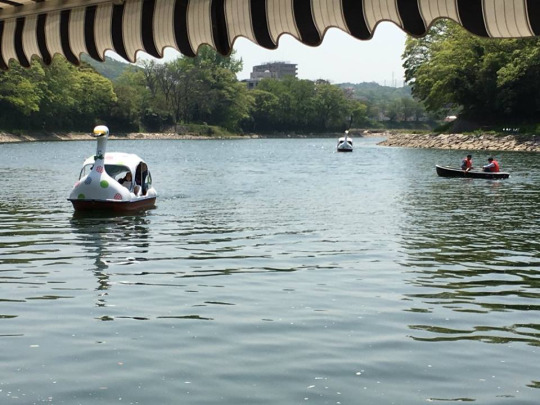
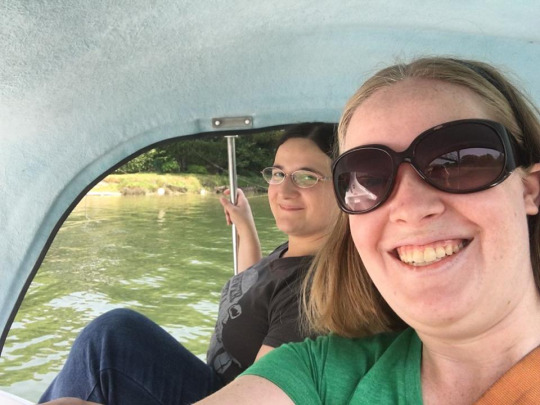
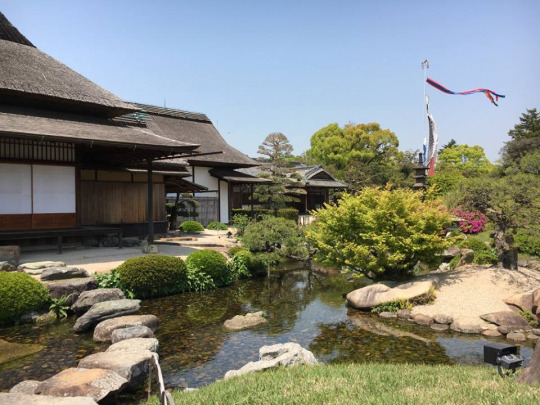
The gardens came after, which we explored for about 30 minutes before we wandered back toward the station to buy more kibidango and catch a train to our second destination of the day, a small town called Kurashiki.
Kurashiki is a historic town about 20 minutes south of Okayama City, most famous for its lovely canal and old buildings. We went to see those things, of course. Our decision to visit Kurashiki didn’t have anything at all to do with the Momotaro Museum that was there. Nope. Nothing to do with that at all.
After a lengthy search for some coin lockers, we walked the 20 minutes out to the Momotaro Museum, which was, of course, our first stop. We were suitably impressed with the displays, which were a mix between weird optical illusions, party tricks, animatronic ogres, and interesting merchandise. We enjoyed ourselves immensely.

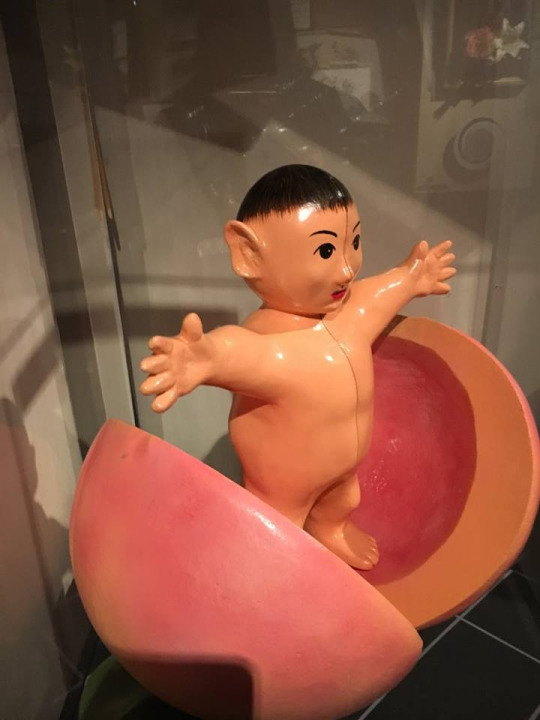
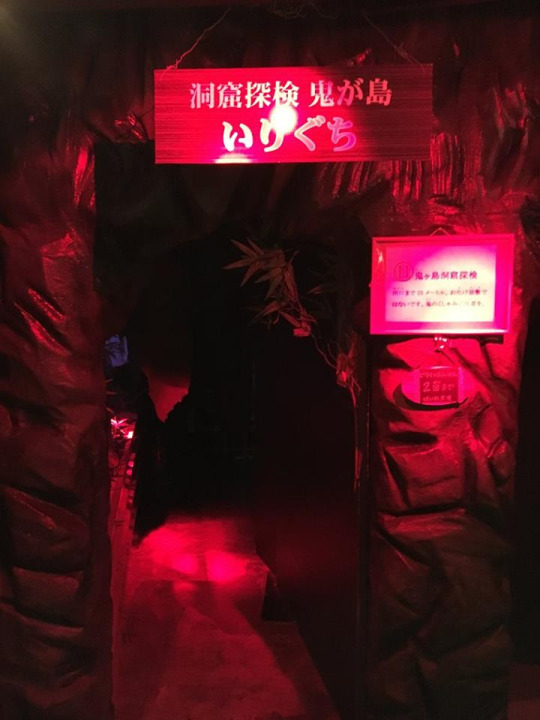

After the museum, we walked along the historic streets, exploring the cute little shops and looking for some interesting soft serve ice cream, which you can always find in Japan no matter where you are. We were expecting to find peach flavor, because usually you find flavors that match things that are famous in that area. We did not expect to find alcoholic ice cream. But that is exactly what we did find. We were both quite amused to see brandy and sake flavors, and even more amused when we discovered the ice cream wasn’t just alcohol flavored--it had a legit alcohol content. We got one of each and had a good time.
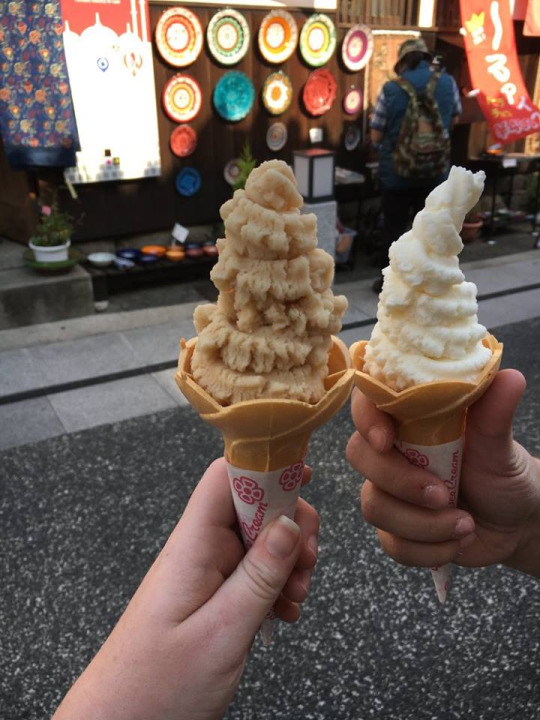
We shopped around a bit more after the ice cream before we hired a rickshaw to run us around for 10 minutes. It was expensive but fun, and our guide spoke really good English (he was also really cute when he tried to speak it).




Finally, around 4 in the afternoon, we headed back to the station and settled in for the long ride down to Hiroshima--about 3 hours on the local trains. We checked in to our hostel for the night, made our plans for the following day, and headed to bed.
----------
On the third day, we caught a cable car from the station near our hostel to Miyajimaguchi, where we boarded a cheap 10-minute ferry to Miyajima Island. Think you don’t know what that is? I pretty much guarantee that you do.
Miyajima Island is home to Itsukushima Shrine and one of the three most famous views in Japan--the “floating” Torii gate. A Torii gate is the Japanese name for the large (usually red) gateways that mark the entrance to shrines and supposedly keep evil spirits out of the shrine grounds. Famous Torii gates in Japan include the massive one at Meiji Shrine in Tokyo and the tunnel to Torii gates at Fushimi-Inari Shrine in Kyoto. And right up there at the top with those is the gate at Itsukushima Shrine.
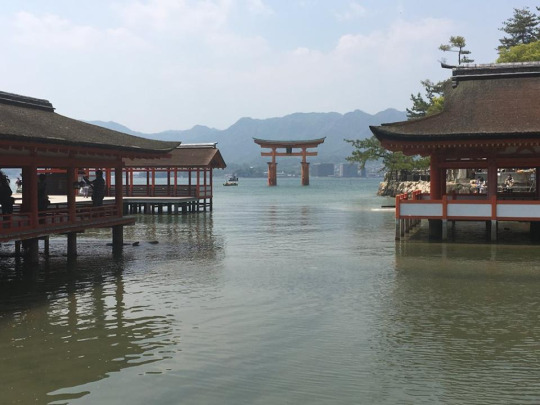
The gate, which is 16 meters (52 feet) tall, was built on the beach of the island right next to the shore line. During high tide, the water rises and covers the base of the gate, which makes it look as though it’s floating on the water. The tide does the same for the rest of the shrine, which was built on stilts to protect it from the water and to make it appear separate from the island, as a place where only the devout could enter. During high tide, you can charter a boat to get up close and personal with the gate, which, of course, we did.


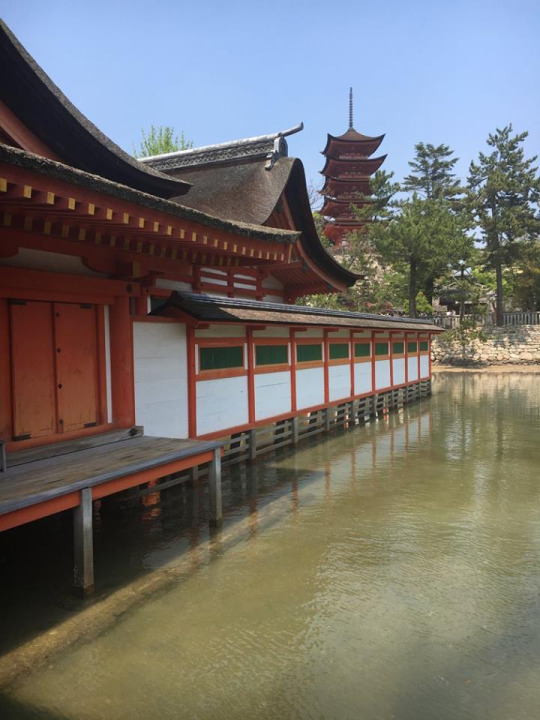
Although the gate and shrine are certainly the most famous things to see on Miyajima, we also enjoyed some other sights as well.
Miyajima, it turns out, has a well-known deer population. Thankfully, unlike in Nara Park, the deer weren’t spoiled and aggressive. But they were quite interesting. While my friend and I were enjoying our “deer poop” ice cream (unique to Miyajima), we witnessed a tourist accidentally drop her map, which was on letter-sized paper. Before she could collect it, it was devoured by a deer. The same deer came over to us and ate the papers that had been on our ice cream cones. I guess they don’t have to worry about trash on Miyajima with walking garbage disposals hanging around all day.

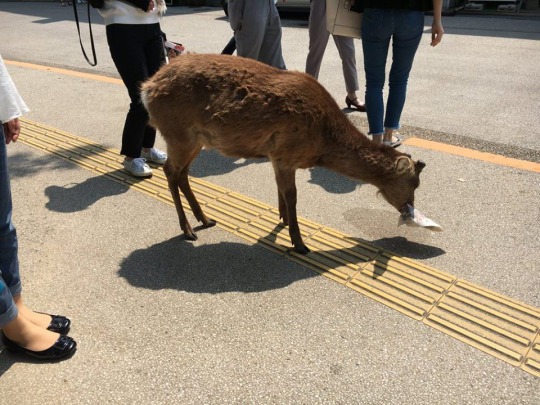
We also visited a couple temples, an owl and cat café, and several souvenir stores before we caught a boat back to the mainland. From there, we caught the cable car back into the city and made the short walk over to the Peace Park and Atomic Bomb Museum.
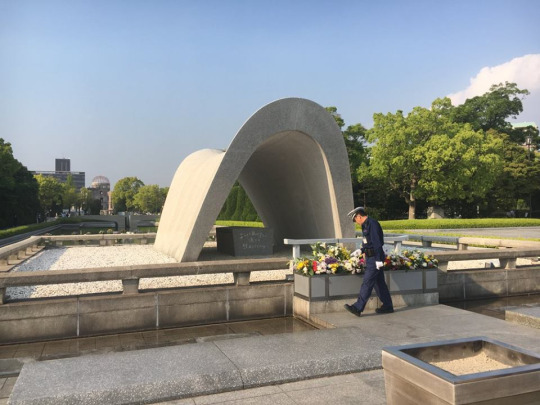
The museum was nice, though half of it was closed for renovation while we were there. We also only had about an hour to explore before they closed, and so we didn’t get to fully explore all of the exhibits. Although it was an interesting museum, I found I enjoyed the one in Nagasaki better, and I wasn’t too upset to have a time limit inside the museum.
After the museum closed, we walked over to the Atomic Bomb Dome--a famous building which survived the bomb despite being only a few meters from the hypocenter.
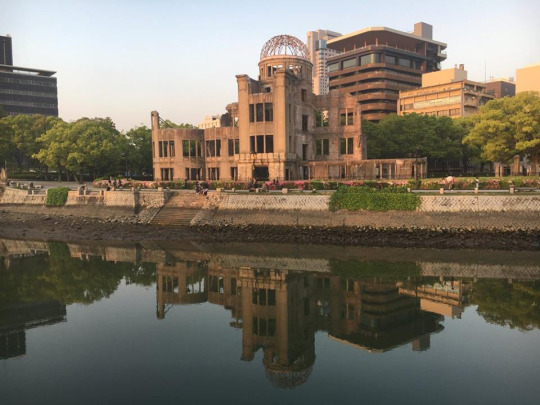
Finally, with the sun setting, we ventured into a covered arcade market in search of some famous Hiroshima-style okonomiyaki. We found some, and it was delicious. Definitely better than traditional okonomiyaki, that’s for sure.


We also found some Obama buttons. People in Hiroshima were really proud of his visit.

And after dinner, we stopped by a convenience store to pick up some drinks and retreated to the hostel, where we watched many episodes of Bones before bed.
--------------
On Day 4, we woke ready for a long day. We checked out of the hostel and caught the cable car to Hiroshima Castle--a beautiful dark-colored castle that was completely levelled and rebuilt after the bombing. We enjoyed the exhibits in the castle, just barely making it inside and through ahead of the many school groups that were also visiting that day.

As we left, we found a tree on the grounds that survived the bomb.
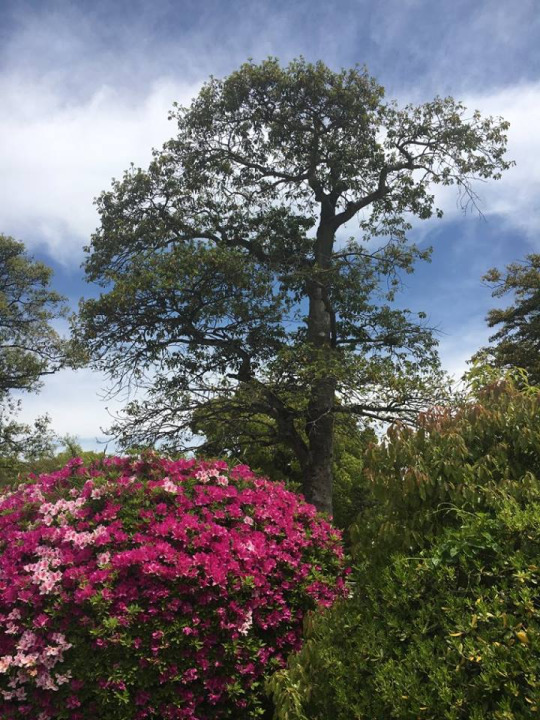
On the outskirts of the castle, we also found a shrine. It turns out this shrine is one of the locations of Japan’s well-known “crying baby” festivals (in which sumo wrestlers hold babies and try to make them cry...the baby which cries first is said to be the healthiest and most fortunate). We were 2 days too early to see the festival, but we were still amused to be standing in the arena.

When we finished at the castle, we headed to Hiroshima Station, where we planned to make the long journey from Hiroshima to Hagi in Yamaguchi Prefecture.
It just so happens that Hagi, while lovely and popular among tourists, is in the middle of nowhere and takes ages to get to. Originally we had planned to take local trains the whole way...a trip which would have taken us 6 hours and 5 transfers. But instead we decided to bit the bullet and pay the extra 2500 yen to take the bullet train to Asa, which wound up saving us about two and a half hours. So. Worth. It.
We arrived in Hagi around 5 p.m., walked the 30 minutes from the station to our hostel, checked in, learned the excellent news that our hostel could accommodate us for two nights (saving us the hassle of trying to find an internet café the following night) and then set out to find dinner. We also tried to find an onsen, but it turns out that all of the hotels with public baths had closed them to the public for the holidays since they were so busy with their guests. Who knew? So we returned to our odd little hostel for the night and watched Bones.
------------
We could actually sleep in a little on the fifth day, since the bus we needed to catch didn’t leave untill about 10:30. We walked to the station, caught the bus we needed, and rode for an hour toward central Yamaguchi and a small town called Mine (pronounced “me-neh”) which is home to the largest limestone cave in Japan. It’s called Akiyoshidai in Japanese but it was dubbed “secret tunnel” by my friend and me. That’s definitely an Avatar: The Last Airbender reference, and we definitely didn’t visit this cave just so we could walk through it while singing “Secret Tunnel.” Of course not.
We spent a couple hours walking around the cave, and we split up for a bit as well so I could go up to the plateau above the caves for some light hiking. We had a good time, and caught the last bus back to Hagi, which left at the late hour of 3:30 p.m.


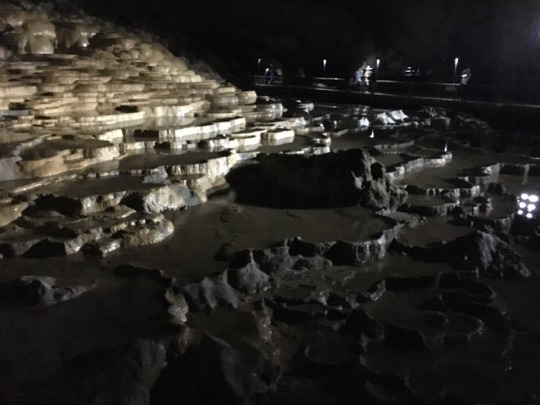



Upon returning to Hagi Station, we caught another bus almost immediately out to Mt. Kasayama, Japan’s smallest volcano. It was about 5 when we reached the base of the short little mountain, and we paused for a moment at Myojin Pond, where you could buy bread to feed to the hawks. (Who know hawks eat bread?)
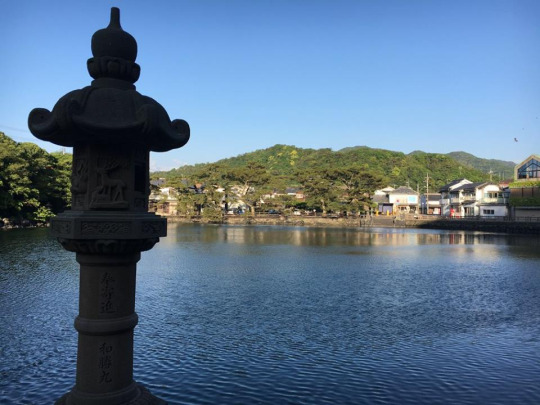

After feeding some hawks, we began the short hike to the top of the mountain, where we had the opportunity to climb down into the crater and then climb up into the observatory. We got lovely views of the sun setting over the water, and then we walked back down, hoping to find an onsen at the hotel at the base of the mountain.
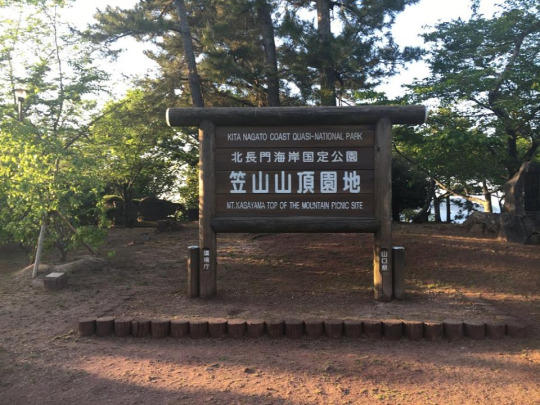
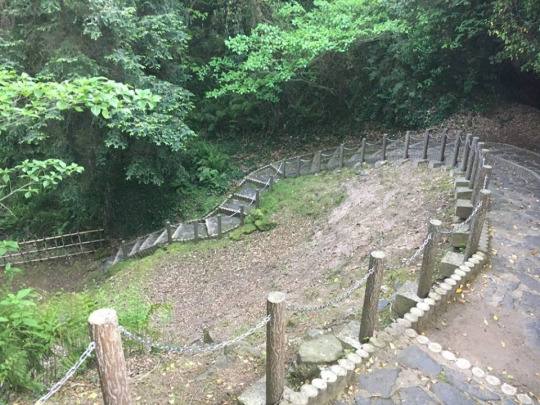
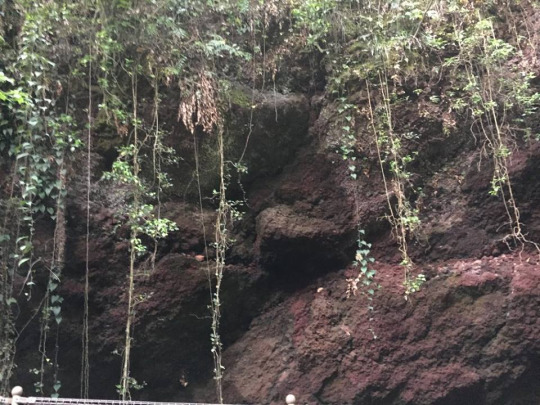
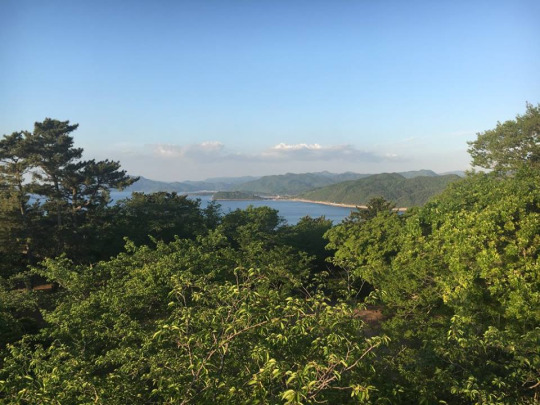

But as was our luck with Golden Week, we weren’t able to enter there, either, and we returned to the bus stop an hour before the next bus would arrive.
We debated what to do for a while before finally deciding that we should just walk back to the hostel. Although it was an hour walk, it wouldn’t take any longer than waiting for and taking the bus would. And so we took a long but lovely walk along the coast, stopped at a family restaurant for dinner, and finally, finally got lucky with an onsen that would let us in. Yay!
We returned to the hostel completely exhausted and fell into bed, not looking forward to another long journey the next morning.
-------------
Day 6 started with another long stretch of travel. We caught a train at 8 and transferred an hour later to an express train that would take us to Izumo City in Shimane Prefecture, home of Izumo Grand Shrine, the oldest shrine in Japan.
Surprise! Everyone else was there too. Because Golden Week.
We arrived by train, which was lucky, since the traffic was backed up for what looked like miles. We wandered around the shops for a while, bought some “rice burgers” for lunch, and meandered up to the shrine itself.
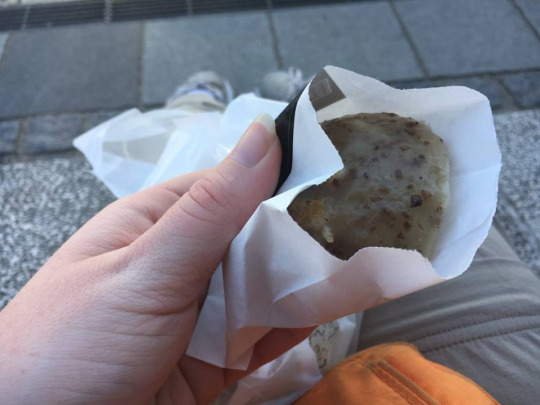
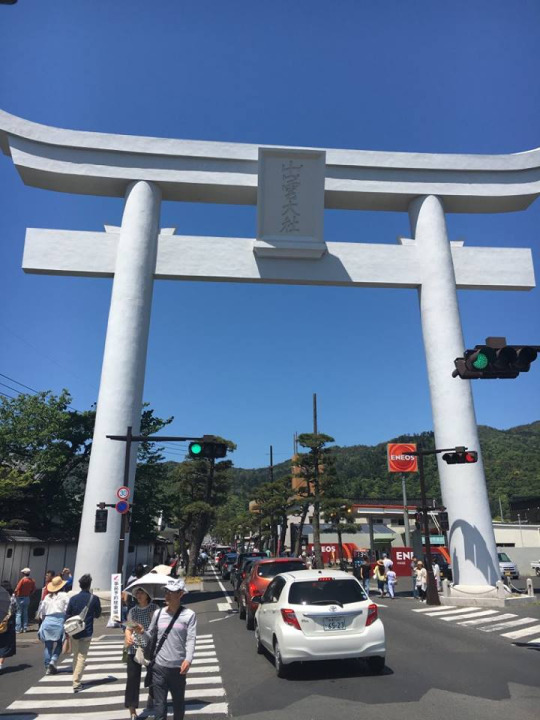


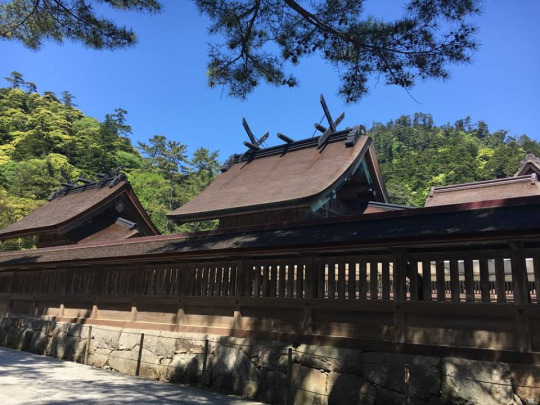

We enjoyed it immensely, but we only spent a couple hours there before hitting the souvenir shops where we both bought some Magatama charms from the shop that makes them for the emperor. We got some ice cream too before taking the train for another hour, up to Matsue City, the capital of Shimane.

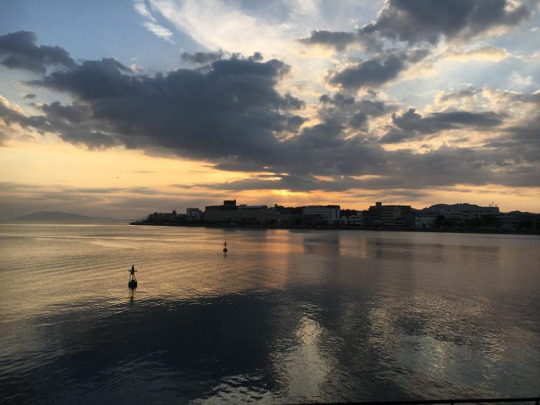
We checked in at our hostel which gave us a private room (yay!), hit up the convenience store for dinner and drinks, and turned in for several hours of Bones.
----------
The next morning, we checked out and wandered over to Matsue Castle, yet another lovely building filled with interesting artifacts. It was completely crawling with Chinese and Korean tourists, and we pushed and shoved our way to the top and back down before ducking around the back of the castle grounds to visit the lovely little Inari shrine.
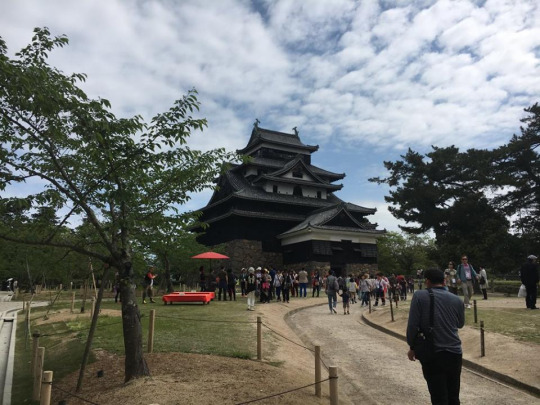

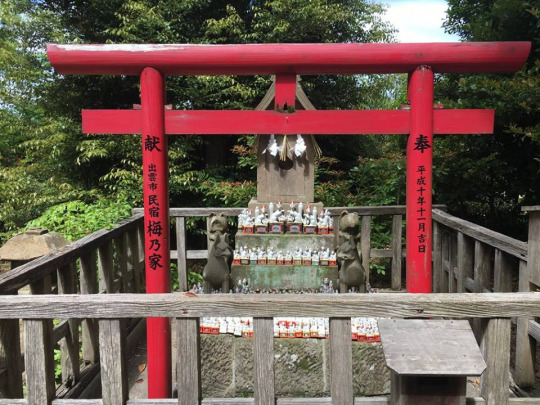
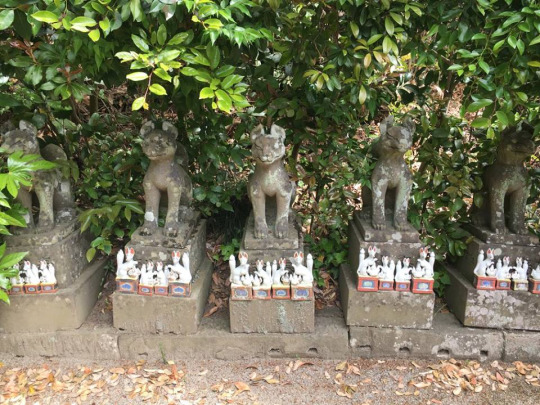
But our Matsue adventure didn’t last long, and soon we were at the station, chilling in Starbucks and waiting for our train to Tottori.
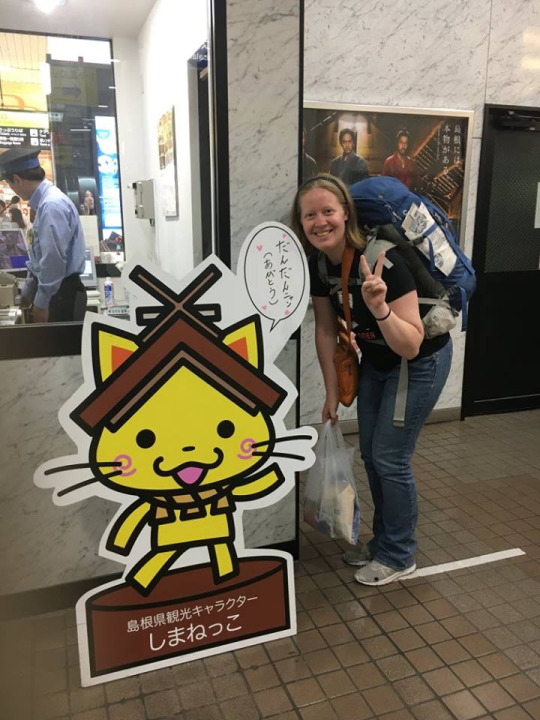
We travelled for another 2 hours to Tottori Station, where we walked about 30 minutes to visit Jinpukaku and the Tottori Castle Ruins. Jinpukaku is a large Western-style mansion that was built by the Ikeda clan to house Emperor Taisho in the early 1900s. It’s quite an interesting house nestled at the foot of the castle ruins, which go up and up and up the nearby mountain.
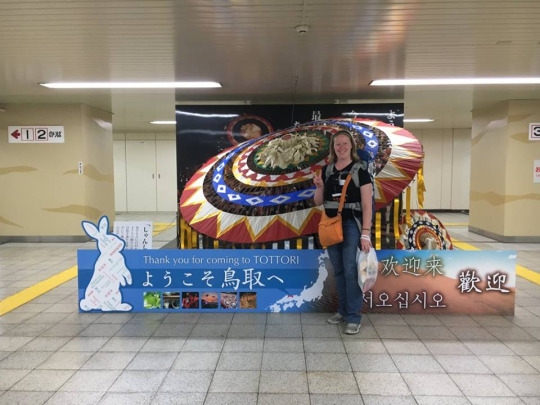
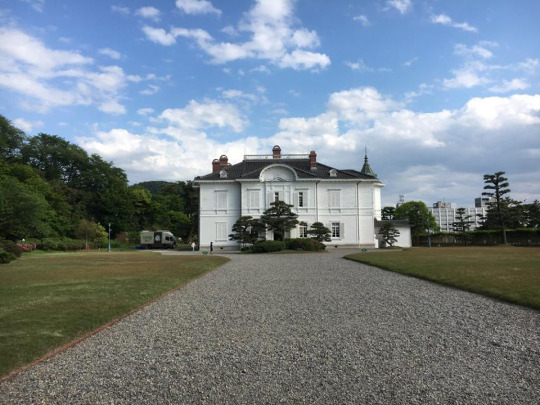
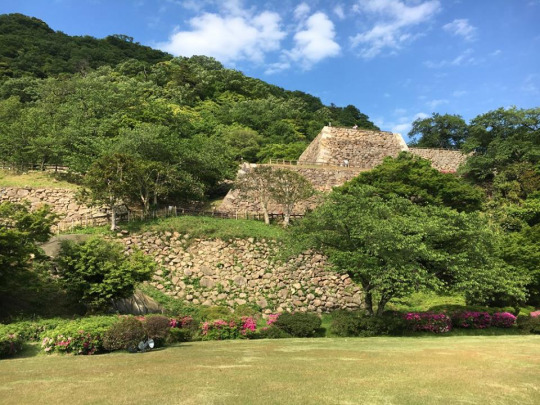
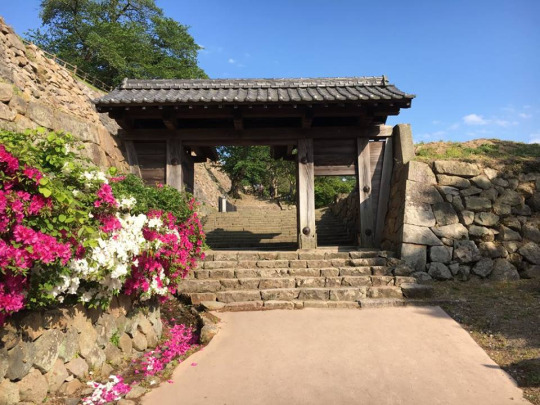


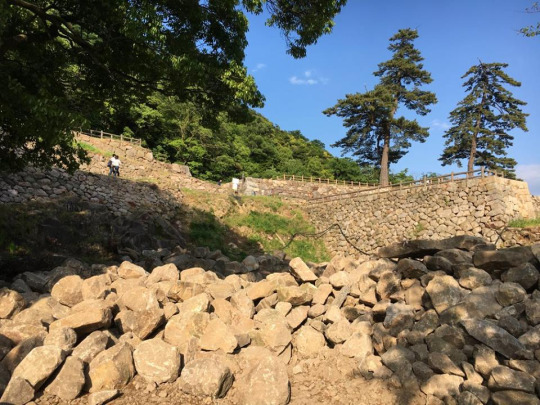
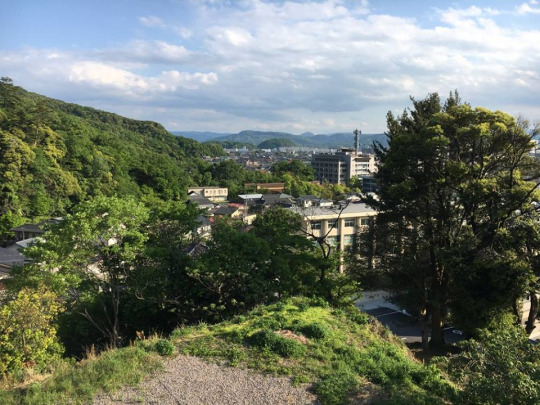
When we finished, we caught a bus back to the station, shopped around for a bit in this amazing little store we found filled with foreign foods (why doesn’t Nagano have one of those???) and caught a train about 20 minutes out of the city to our hostel.
We were happy to discover that we pretty much had the entire upper floor of the hostel to ourselves, including the large-screen TV. So what did we do? Bought dinner at the conbini across the street, hooked a computer into the TV, and watched Bones all night.
-----------
The next day was the last full day of our trip, and we woke up to pouring rain. Of course. But we ganbatte’d and caught a train and bus out to the main attraction of Tottori, the sand dunes.
If you have never thought about the words “Japan” and “desert” in relation to one another, you’re not alone. And really, the Tottori sand dunes aren’t really a desert. Really, it’s just like a beach. The sand stretches a little under a kilometer from the shore, and continues for about 16 kilometers along the coast. But this is not just a beach. This is a beach with giant mountains of sand. And if you get down in the middle of it, you kind of feel for a second like you might be in a desert. It’s pretty cool.
But like I said, it was raining when we arrived. And so we first visited the Sand Sculpture Museum, which was probably the highlight of our day. The theme of the museum changes every year, and this year it just so happened to be the U.S.
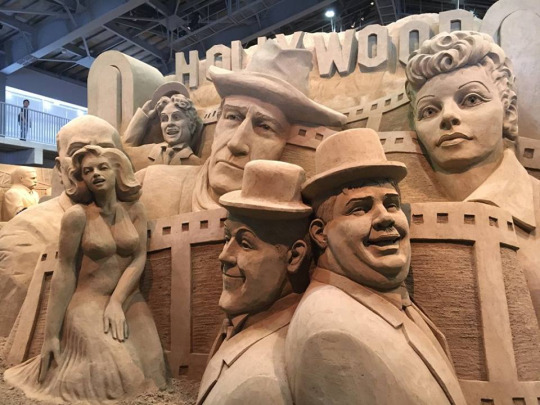

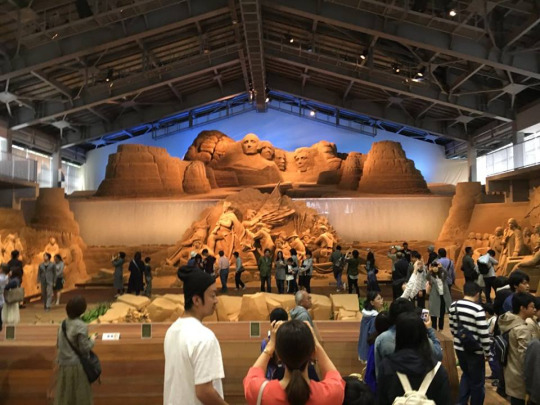

Just look at these things. I mean really. They’re 3, 4, or 5 meter high sculptures made entirely out of sand. Like, wow.
We had a good time in the museum before we finally headed over to the chair lift that would take us down into the actual sand. Then we had fun running around in the sand, climbing dunes, and taking lots, and lots of pictures. We also tried to ride the camels, but it turns out you can’t ride a camel there unless you’re a kid. Lame.


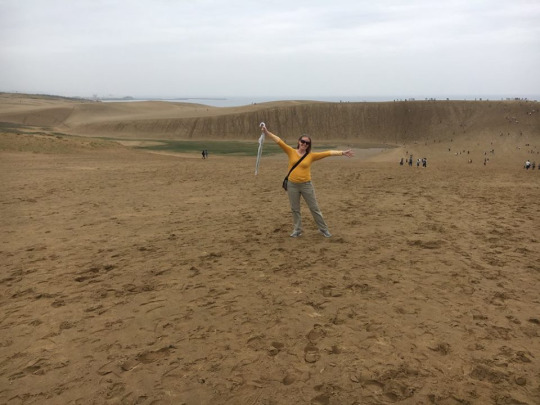
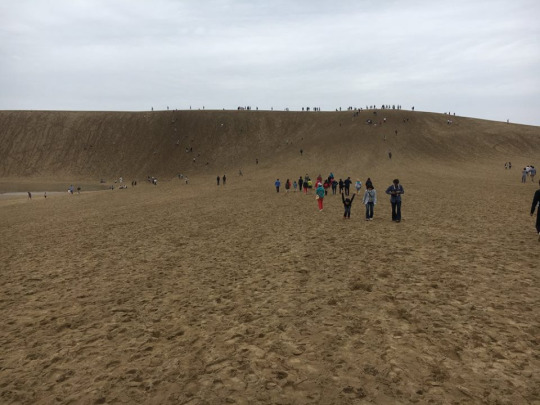


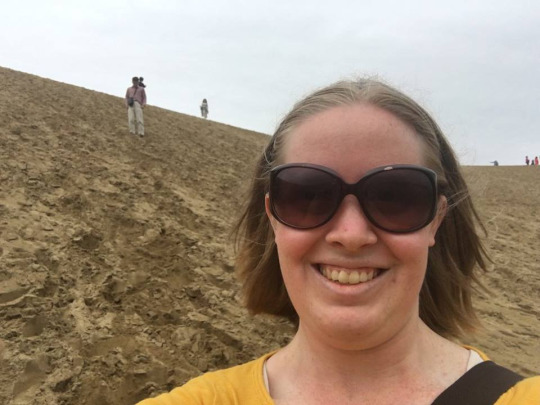

But we spent about an hour there anyway before heading back to the main strip for souvenir shopping and lunch.
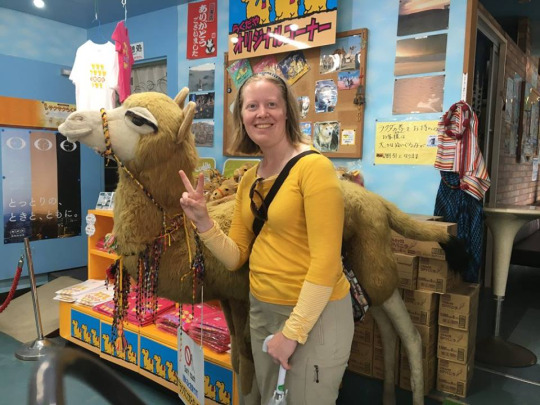
We returned to the dunes for a short time then, and eventually took the chair lift back up, did some more shopping, and took the bus back to Tottori Station. From there, we went in search of an onsen and had about as much luck as we did in Hagi. But a nice hotel worker pointed us in the direction of a good sento (a generic public bath house), and, while not an onsen, we figured it would do. We enjoyed the bath, grabbed dinner at MOS Burger, and returned to the hostel for more Bones after realizing there’s literally nothing to do in Tottori City besides see the sand.
We enjoyed the night and went to bed, not at all ready for our long trek home the next day.
-----------
Our final day, we woke up early and caught a train into Tottori City and, from there, we caught a 2.5 hour express train to Osaka. We visited Krispy Kreme in Osaka before we caught a 3 hour bus from Osaka to Nagoya. And in Nagoya, we caught a 4 hour bus to Matsumoto. And finally, after almost 15 hours, we arrived back in Matsumoto. I drove home, slept, and went to work the next morning. Yay!
-----------
All in all, this trip was a lot of fun, despite the craziness of planning it so last minute. The hardest thing about it was the transportation, which was pretty long and complicated on the second leg of our journey, once we got off the beaten “foreigner tourist” path. When we decided to go on this trip, neither of us had considered 1) how big Hiroshima, Yamaguchi, Shimane, and Tottori are, and 2) that there were no busses to any of these locations. The train fares wound up being really expensive, especially after we gave in and paid extra for express trains in a couple cases. We also spent a lot on boat rides, rickshaw rides, and kibidango. Oops.
But we did have a good time, and it was nice to cross another 6 prefectures off my list. Now I’ve been to 31 of 47, which isn’t too bad considering how many places I’ve been to outside of Japan as well. I might be able to hit a couple more on the weekends in the next couple of months, but we’ll see about that. For the most part, I’m just glad we survived this trip.
Now, my big trips are over for the most part, and I’ll be spending my remaining weekends hopefully checking some last-minute things off my Japan bucket list. I plan to hit to Kurobe Alpine Route, the Ghibli Museum, Kamikochi (yes, again), the Shinetsu Trail, Mt. Ontake, and Achi Village before I head back to the States. These things may or may not happen, we I’m going to try.
And in the meantime, I get to focus on boring things like job hunting, cleaning, and packing. Yay.
I can’t believe it’s almost time to leave Japan. And I also can’t believe I’ve been here for 3 years now. Time flies, that’s for sure. But I’m ready for my next adventure.
#golden week#traveling japan#himeji castle#okayama#momotaro#kurashiki#hiroshima#miyajima#hiroshima peace park#bakudan dome#yamaguchi#hiroshima castle#akiyoshidai#hagi#kasayama#shimane#izumo grand shrine#matsue castle#tottori castle ruins#jinpukaku#tottori sand dunes
2 notes
·
View notes